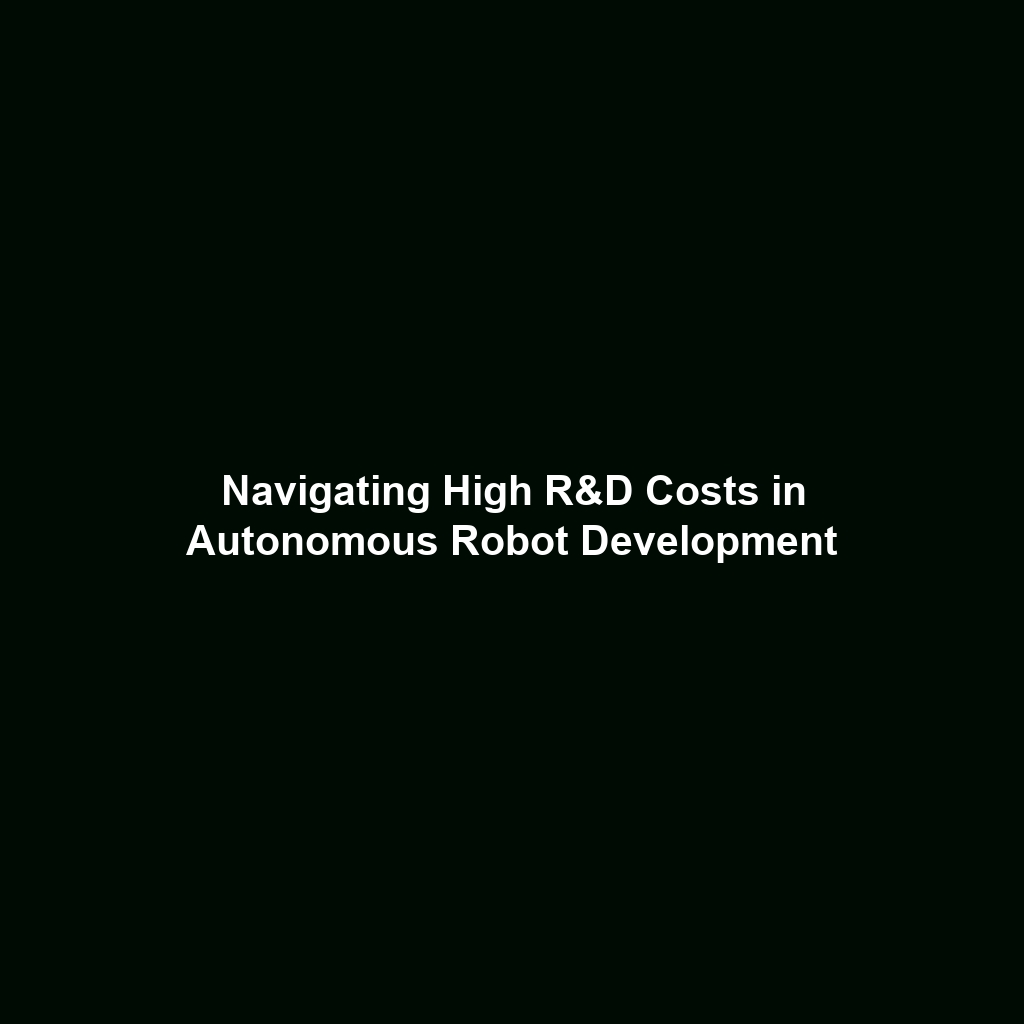The High Cost of Materials, Sensors, and Actuators in Humanoid Robot Development
Category: Humanoid Robots
Introduction
The development of humanoid robots, which are designed to mimic human behavior and interaction, necessitates a vast array of resources. One of the most significant challenges facing developers is the high cost of materials, sensors, and actuators involved in humanoid robot development. These expenses are critical as they directly influence the feasibility and advancement of robotics technologies. Understanding these costs is essential not only for innovators and engineers in the field but also for stakeholders interested in the applications and implications of humanoid robots.
Key Concepts
The high cost of materials, sensors, and actuators in humanoid robot development can be analyzed through several key concepts:
- Materials: Humanoid robots require durable and lightweight materials such as advanced polymers, metals, and composites that can withstand continual stress and movement.
- Sensors: The precision and functionality of humanoid robots largely depend on sophisticated sensors, including pressure sensors, vision systems, and accelerometers, which can significantly drive up costs.
- Actuators: These components enable motion. High-performance actuators capable of mimicking human muscle movements are often expensive due to their complexity and required engineering.
Applications and Real-World Uses
Understanding the high cost of materials, sensors, and actuators involved in humanoid robot development is crucial, particularly as they relate to numerous real-world applications:
- Healthcare: Humanoid robots are increasingly used in rehabilitation, providing assistance to patients recovering from injuries.
- Service Industry: Many businesses deploy humanoid robots for customer interaction, reception duties, and even guidance in shopping centers or airports.
- Education: Humanoid robots are employed as teaching aids, facilitating interactive learning experiences in classrooms.
Current Challenges
While humanoid robots represent an exciting frontier, the high costs present some challenges:
- Production Costs: The expense of high-quality materials leads to expensive prototypes, limiting scalability.
- Market Accessibility: High prices mean fewer industries can afford to adopt humanoid robots, stunting innovation potential.
- Technological Limitations: The complexity of integrating sensors and actuators increases development time and costs exponentially.
Future Research and Innovations
Ongoing research into reducing the costs associated with humanoid robot development holds great promise. Key areas of interest include:
- Material Science: Developing cheaper, more durable materials could significantly reduce overall costs.
- Advanced Manufacturing Techniques: Techniques such as 3D printing may lower production costs and increase design flexibility.
- Sensor Technology: Innovations in smaller, more efficient sensors can reduce costs while enhancing performance.
Conclusion
In summary, the high costs associated with materials, sensors, and actuators are substantial factors in the development of humanoid robots and represent both a challenge and an opportunity for future research and innovations. Understanding these financial intricacies is crucial for stakeholders invested in the humanoid robotics sector. For further information on the advancements in robotic technology, consider reading our articles on robotic sensors and intelligent actuators.









